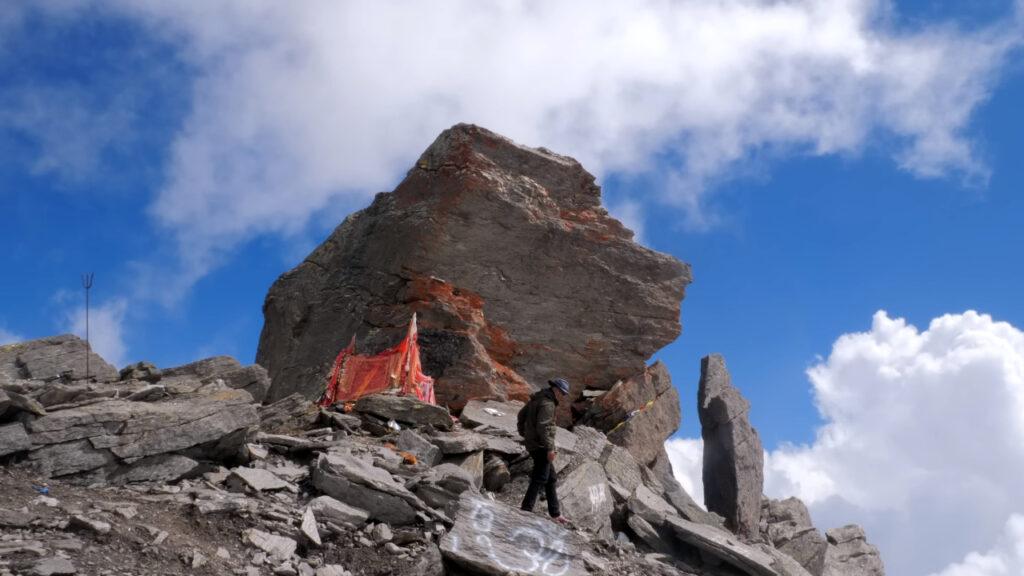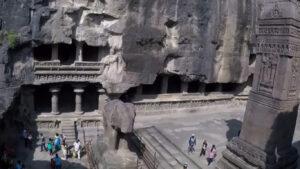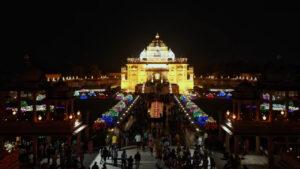Shrikhand Kailash Trek
Shrikhand Kailash Trek is a pilgrimage trek in Himachal Pradesh, India, that leads to the Shrikhand Mahadev peak, which is considered to be one of the abodes of Lord Shiva. The peak has a 72 feet high rock formation that resembles a Shivalinga, the symbol of Lord Shiva. The trek is one of the most challenging and rewarding treks in India, as it offers stunning views of the Himalayan ranges, glaciers, waterfalls, and valleys.
The trek starts from Jaon village, which is about 170 km from Shimla, the nearest railhead. The village is also accessible by road from various places in Himachal Pradesh and other states. The trek is about 64 km long (32 km one way) and takes about 5 to 6 days to complete. The trek passes through several base camps, such as Singhgad, Thachru, Kali Ghati, Kunsha, Parvati Bagh, Nain Sarovar, and Bhimdwar.
The trek involves steep ascents and descents, rough terrains, rocky moraines, and snow-covered paths. The trek also requires high-altitude acclimatization and physical fitness.
History and Mythology of Shrikhand Kailash
Shrikhand Kailash is one of the five Kailashas or the holy mountains of Lord Shiva. The other four are Mount Kailash in Tibet, Manimahesh Kailash in Himachal Pradesh, Adi Kailash in Uttarakhand, and Kinnaur Kailash in Himachal Pradesh. The legend, Shrikhand Kailash was formed when Lord Shiva broke a part of Mount Kailash and threw it away during his fight with the demon Bhasmasura. The broken part landed in the Himalayas and became Shrikhand Kailash. It is believed that Lord Shiva meditated here for thousands of years and attained supreme knowledge.
The trek to Shrikhand Kailash is a spiritual journey for many devotees who worship Lord Shiva and seek his blessings. The trek also offers a glimpse of the local culture and traditions of the region. The trek passes through several places that have their own significance and stories. Some of these places are:
- Singhad: This is the first base camp of the trek, where langar (free meal) is served to the pilgrims. It is also the place where Lord Hanuman rested while carrying the Sanjeevani herb for Lakshmana.
- Thachru: This is the second base camp of the trek, where tents are available for lodging. It is also known as Dandi Dhar, or the stick height, because of its steep slope.
- Kali Ghati: This is the place where Goddess Kali resides and protects the pilgrims from evil forces. The peak of Shrikhand Mahadev can be seen from here on a clear day.
- Bheem Talai: This is a small pond where Bheema, one of the Pandava brothers, quenched his thirst during his exile in the forest.
- Kunsa Valley: This is a green valley with Himalayan flowers and herbs. It is also known as Mini Switzerland because of its scenic beauty.
- Bheem Dwara: This is the third base camp of the trek, where meals and tents are available. It is also the place where Bheema killed a demon named Bakasura.
- Parvati Bagh: This is a garden planted by Goddess Parvati, the wife of Lord Shiva. It has rare flowers like Brahma Kamal, which are used for worshiping Lord Shiva.
- Nain Sarovar: This is a holy lake where pilgrims take a dip before proceeding to the peak. It is said that this lake was created by Lord Shiva’s tears when he saw Goddess Parvati’s death during their wedding ceremony.
- Bhimshila: This is a huge rock that blocks the way to the peak. It is said that this rock was placed by Bheema to prevent anyone from reaching Lord Shiva’s abode.
Best Time to Visit Shrikhand Kailash
The best time to visit Shrikhand Kailash is from July to August, during the auspicious month of Shravan. This is when the weather is favorable and the flowers are in full bloom. This is also when the trek is crowded with many pilgrims and tourists. The trek can also be done during other months with proper guidance and precautions.
Rituals of Shrikhand Kailash
The main ritual of Shrikhand Kailash is to perform a circumambulation or parikrama around the peak and offer prayers to Lord Shiva. The pilgrims also perform other rituals such as:
- Offering water, milk, honey, flowers, fruits, and belpatra (a type of leaf) to the Shivalinga at the peak.
- Tying a red cloth or mauli around their wrists or necks as a symbol of protection and blessing from Lord Shiva.
- Applying vermilion or sindoor on their foreheads as a sign of devotion and faith in Lord Shiva.
- Chanting mantras or hymns such as Om Namah Shivaya or Mahamrityunjaya Mantra to invoke Lord Shiva’s grace and power.
- Meditating or doing yoga at the peak to attain peace and enlightenment.
Is Shrikhand Mahadev trek open?
The status of the Shrikhand Mahadev trek depends on the weather conditions and the permission of the local authorities. The trek is usually open from July to September when the snow melts and the trail becomes accessible. There may be some restrictions or closures due to heavy rainfall, landslides, or other natural calamities. Therefore, it is advisable to check the latest updates from reliable sources before planning your trip.




